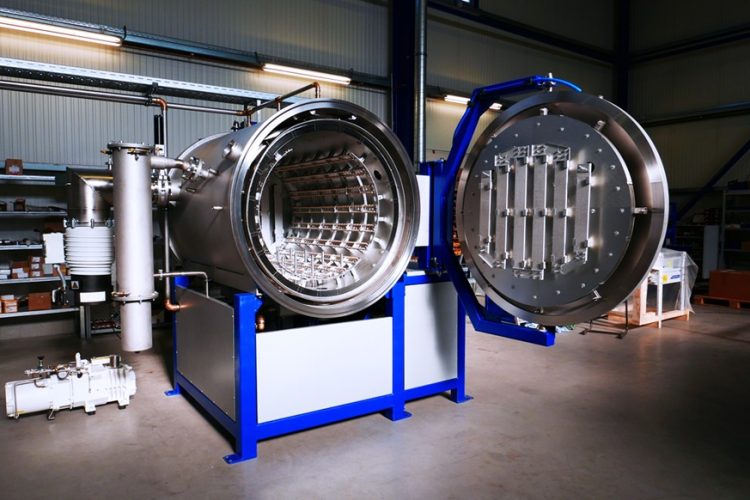The tungsten heat sink has become an essential component in the relentless push toward smaller, more powerful electronic systems. Walk through any advanced manufacturing facility today and you will encounter a fundamental contradiction: engineers pack ever more processing power into shrinking spaces whilst simultaneously battling the heat these concentrated components generate. This collision between miniaturization and thermal physics creates scenarios where conventional cooling approaches simply cannot keep pace.
The High-Density Challenge
Modern power electronics push boundaries that seemed impossible a decade ago. The physics are unforgiving: double the power density and you must double the heat removal capacity or watch temperatures climb toward destruction.
High-density thermal challenges appear across multiple sectors:
- Data centres where processors consume 300 watts whilst occupying spaces smaller than a credit card
- Telecommunications base stations cramming kilowatts of radio frequency power into weatherproof enclosures
- Medical imaging equipment requiring precise temperature control in compact packages
- Industrial laser systems generating extreme localized heat in focused processing applications
- Automotive power inverters handling hundreds of amperes in tightly constrained underbody spaces
All share this common thread: shrinking footprints and rising power densities that demand exceptional thermal solutions.
Why Tungsten Delivers Results
The tungsten heat sink addresses high-density thermal challenges through properties that prove decisive when space is limited and heat loads are extreme. At 19.3 grams per cubic centimetre, tungsten packs remarkable heat storage capacity into minimal volume. A small tungsten heat sink absorbs temperature spikes that would overwhelm larger aluminium alternatives, buying precious time for heat dissipation to occur.
Key performance characteristics include:
- Superior volumetric heat capacity storing more thermal energy per cubic centimetre than competing materials
- Rapid thermal response enabling effective management of transient heat loads
- Dimensional stability maintaining precise geometry under thermal stress
- Compatibility with advanced cooling methods including microchannel liquid cooling and thermoelectric devices
- Long-term reliability in demanding duty cycles that degrade lesser materials
Singapore’s tungsten heat sink applications in high-power LED arrays demonstrate these advantages clearly, with compact designs maintaining junction temperatures within specification despite power densities that would typically require much larger cooling solutions.
The Military and Aerospace Proving Ground
Nothing validates thermal technology quite like military and aerospace applications. These sectors tolerate no compromise on reliability whilst demanding maximum performance from minimum space and weight.
Critical military and aerospace applications include:
- Fighter aircraft avionics managing kilowatts of heat from radar and electronic warfare systems in confined bays
- Phased array radar systems requiring precise temperature control for gallium nitride power amplifiers
- Satellite electronics balancing launch weight constraints against decades-long mission reliability requirements
- Missile guidance systems operating reliably despite extreme acceleration and thermal environments
- Unmanned aerial vehicle sensors combining high power density with stringent weight limitations
The tungsten heat sink has earned its place in these demanding environments through demonstrated performance under stress. Engineers discovered that tungsten’s thermal mass provided crucial temperature stabilization for gallium nitride power amplifiers, solving what had become a critical bottleneck in system development.
Industrial Reality and Economic Pressures
Cost considerations cannot be ignored. Tungsten costs substantially more than aluminium or copper. This price difference means adoption follows a clear pattern: tungsten appears where space constraints, performance requirements, or operational conditions make alternatives unworkable.
The economic justification becomes clear in several scenarios:
- Manufacturing lasers where cooling failures cost thousands of pounds per hour in lost production
- Process control systems where thermal-related downtime disrupts entire production lines
- Medical equipment where reliability directly impacts patient safety and regulatory compliance
- Telecommunications infrastructure where network uptime determines service revenue
- Industrial robotics where component failures halt automated production cells
Singapore’s tungsten heat sink suppliers report growing interest from industrial sectors where uptime directly impacts profitability. The calculation becomes straightforward: premium material costs pale against the financial impact of thermal failures.
Electric Vehicle Power Systems
The automotive industry provides another case study in evolving economics. Electric vehicle power inverters present specific challenges:
- Tight packaging constraints in underbody mounting locations
- Current levels exceeding 500 amperes creating concentrated heat sources
- Warranty exposure making reliability paramount for manufacturers
- Operating temperature ranges from minus 40 to plus 85 degrees Celsius ambient
- Vibration and shock loads during normal vehicle operation
Recent adoption of tungsten heat sinks in critical high-power modules reflects a pragmatic calculation: the added material cost becomes negligible compared to warranty costs and brand damage from field failures.
Manufacturing and Integration Challenges
Producing effective tungsten heat sinks requires specialized knowledge and equipment:
- Powder metallurgy techniques for creating complex geometries
- Spark erosion machining for precision feature creation
- Specialized tooling to handle tungsten’s extreme hardness
- Surface finishing processes achieving optimal thermal interface characteristics
Interface design proves equally critical. Engineers must carefully specify:
- Thermal interface materials matching component and sink thermal expansion
- Mounting pressure specifications ensuring consistent contact across the interface
- Surface finish requirements minimizing microscopic air gaps
The Path Forward
The trajectory seems clear: electronics will continue growing denser and more powerful, pushing thermal management requirements beyond what current mainstream solutions can handle. The tungsten heat sink stands positioned to meet these escalating demands, its unique combination of compact size and high thermal capacity addressing challenges that conventional materials cannot overcome, making it an increasingly vital component in the ongoing effort to extract maximum performance from minimum space whilst maintaining the reliability that critical applications demand, ensuring the tungsten heat sink remains an essential tool for engineers confronting the thermal realities of high-density electronic systems.

